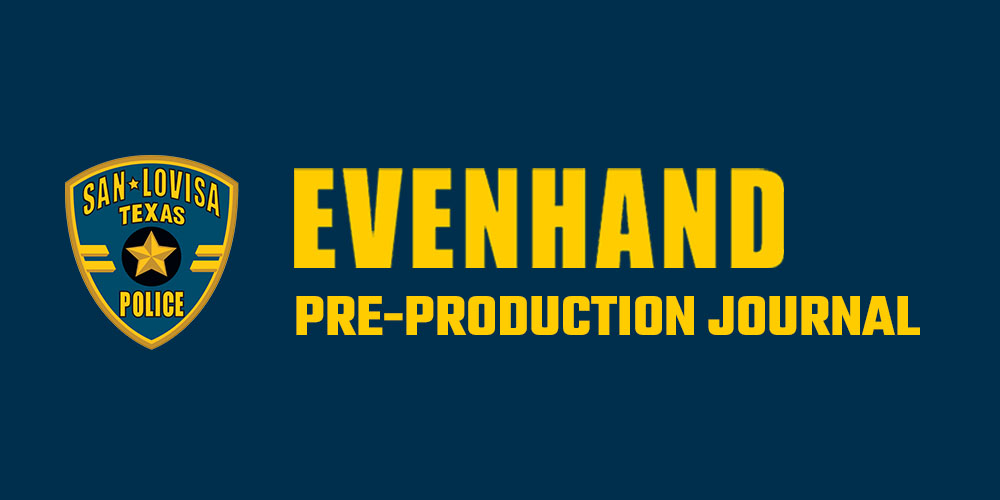The shoot is over, the Avid has come and gone, the scene is done. So, how did it turn out?
Boy, am I glad we did this little digital video exercise. I went into it not knowing what to expect and came out with at least a rudimentary knowledge of the digital experience and a greater understanding of the screenplay.
First of all, a new medium, whatever it is, will not tell your story for you. I didn’t expect that it would (I’m not a total idiot!), but I did approach the shoot as informally as possible — no shot list, no extensive blocking rehearsals for the actors, no lengthy discussions with the DP. I intentionally imposed no limitations on what we did; if the DP wanted to put the camera in an unconventional position I let him. We shot everything, with the exception of the car mounts, handheld for maximum flexibility of movement.
The result, after editing for a week, was a considerable amount of footage that was unusable. EvenHand is not a conceptual or experimental work, it’s an off-beat but essentially straightforward narrative. As such, there are conventions of filmmaking that are difficult to get around. For instance, you can’t just put the camera anywhere; actor’s eye-lines are really important (two characters talking to one another can’t both be looking camera right, it looks stupid and jarring). That is not to say that EvenHand won’t be stylish and daring. It must be both of those things to succeed. But, neither of those attributes can be achieved without careful planning.
I also learned that while video is a very different medium in terms of how it responds to light, you need to take every bit as much care in how you light it as with film. We had a bare-bones lighting package and it shows in the final result. More is not always better, but sometimes a little bit more is. And again, if low lighting is a conscious stylistic choice, make it look like you did it on purpose, which takes careful consideration. Spontaneity is an incredibly important component of any film, but you have to go in with a plan.
The final lesson is that the EvenHand script is harder to film than it looks. A scene that read as very powerful on the page didn’t have the same impact on the screen. It was not about the quality of actors or directing, it was about making more carefully considered visual choices to bring out the conflict. It’s not as easy as aiming the camera and letting the actors do all the work. But then I suppose it never is.
As a post script to the above, Ray Carney, a leading authority on American independent film and author of Cassavetes on Cassavetes, offers an interesting perspective on the relationship between technology and art:
I’m convinced that, no matter how cheap filmmaking becomes, there won’t ever be a glut of masterpieces. Technology does nothing by itself. Better, smaller, cheaper cameras don’t make better art; better artists do. In 17th-century Holland, oil painting was a cutting edge technology, but it took Rembrandt and Frans Hals to do something amazing with it. The digital revolution will probably quadruple the number of feature films made in a year, but most of them will still be garbage, just like most of them are now.
There is much wisdom in what Mr. Carney says.
– Joseph Pierson


